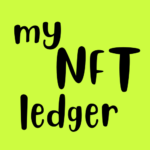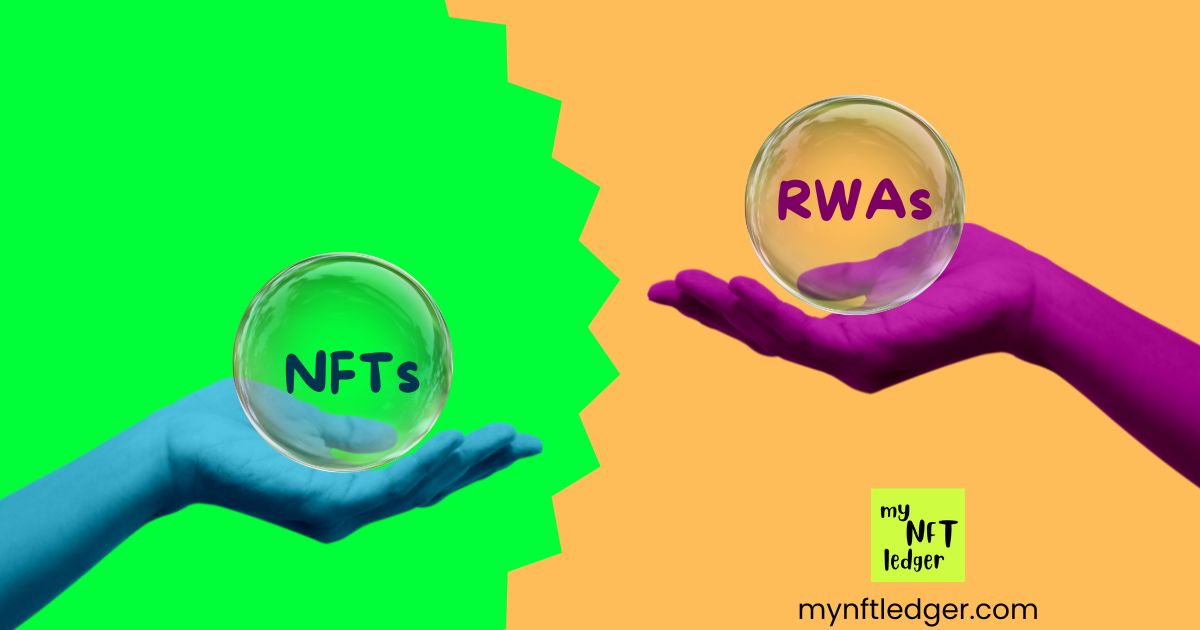Tokenization of Real World Assets is like NFTs where you own digital tokens which represent your ownership or stake but unlike NFTs it is specific to real world assets. Now to understand this question if the tokenization of real world assets is the next big thing after NFTs, first, we need to understand the difference between the two.
The Real World Assets (RWAs) and Non-Fungible Tokens (NFTs) both are innovative uses of blockchain technology. They both serve similar purposes and still, they are very different. RWAs and NFTs leverage blockchain’s transparency to represent ownership and facilitate transactions. But how are they different? Let see-
Non-Fungible Tokens (NFTs)
NFTs are unique digital tokens created and verified on a blockchain. Unlike cryptocurrencies such as Bitcoin or Ethereum, which are fungible and identical, NFTs represent specific items or assets, each with its own unique attributes and value. NFTs are indivisible and cannot be exchanged on a one-to-one basis with other tokens. They primarily signify ownership of digital content, such as art, music, videos, and virtual items within digital worlds. Notably, some of the most expensive NFTs have garnered attention for their record-breaking prices and unique artistic value.
Real World Assets (RWAs)
RWAs refer to tangible and physical assets that exist in the real world, such as real estate, commodities (like gold and oil), shares, and bonds. These assets are traditionally managed through various intermediaries and processes in the financial and real estate sectors. RWAs are physical or financial assets that can be tokenized on a blockchain. RWA tokenization involves converting these assets into digital tokens that represent ownership or a stake in the physical asset.
Key Difference Between Real World Assets (RWAs) and NFTs
Nature and Use Case:
NFTs: Primarily used to represent ownership and authenticity of unique digital items. Examples include digital art, collectibles, and virtual goods. NFTs are often valued for their uniqueness and rarity, which makes them ideal for digital art and entertainment sectors.
RWAs: Represent tangible or financial assets that exist in the physical world. RWA tokenization aims to improve liquidity, accessibility, and efficiency in traditional asset markets. Examples include real estate properties, precious metals, and financial securities.
Fungibility:
NFTs: Non-fungible by nature. Each NFT is distinct and cannot be exchanged on a one-to-one basis with another NFT. This uniqueness is intrinsic to their value and application, particularly in digital art and collectibles.
RWAs: Real World Assets can be either fungible or non-fungible depending on the type of asset. For example, a token representing a share of a company (like a stock) is fungible, whereas a token representing a specific piece of real estate is non-fungible.
Ownership and Transferability:
NFTs: Ownership is tied to the specific digital asset. The NFT itself is a unique identifier on the blockchain that proves ownership and authenticity. Transfer of ownership involves transferring the NFT token.
RWAs: RWA tokenization involves creating digital tokens that represent ownership or shares in the physical asset. These tokens can be traded or transferred, but they are linked to the real-world asset they represent. For instance, a tokenized real estate property allows fractional ownership, but the physical property remains intact.
Market Impact:
NFTs: Have disrupted the art and collectibles markets by providing a new way to monetize and authenticate digital creations. They have created new revenue streams for artists and creators and have introduced innovative ways to engage with digital content.
RWAs: Aim to enhance traditional asset markets by providing fractional ownership, improving liquidity, and reducing transaction costs. The impact is seen in making high-value assets more accessible and efficient in terms of trading and management.
Regulatory and Legal Framework:
NFTs: Operate within a relatively nascent regulatory environment focused on digital content and intellectual property. Legal issues often revolve around copyright, ownership rights, and the authenticity of digital creations.
RWAs: Are subject to established regulatory frameworks related to financial and real estate markets. The tokenization of RWAs must comply with existing laws governing securities, property transactions, and financial instruments.
The Evolution from NFTs to RWAs
NFTs introduced the concept of unique digital ownership, allowing individuals to buy, sell, and trade digital assets with clear provenance and authenticity verified through blockchain technology. Initially popularized by digital art and collectibles, NFTs have demonstrated the potential for blockchain-based ownership in various domains. As the technology matures, the focus is shifting towards a broader application: the tokenization of RWAs.
Advantages of the tokenization of Real World Assets (RWAs)
Real-World Assets (RWAs) encompass physical and financial assets like real estate, commodities, shares, and bonds. Traditionally, managing and trading these assets involves complex processes and intermediaries, such as brokers, notaries, and financial institutions. Tokenization aims to streamline these processes by representing RWAs as digital tokens on a blockchain, thereby unlocking several advantages:
Fractional Ownership: Tokenization allows real world assets to be divided into smaller, more accessible units. This democratizes investment opportunities, enabling more people to invest in high-value assets like commercial real estate or luxury goods that were previously out of reach for individual investors.
Enhanced Liquidity: Blockchain-based tokens can be traded with ease, potentially increasing the liquidity of traditionally illiquid assets. This means that assets which once took time and effort to sell can now be bought and sold more rapidly and efficiently.
Improved Transparency: The use of blockchain technology ensures that every transaction related to the RWA is recorded in a transparent, immutable ledger. This reduces the risk of fraud, enhances trust in asset provenance, and provides a clear history of ownership and transactions.
Reduced Costs and Complexity: Traditional asset management involves various intermediaries, each adding layers of cost and complexity. Tokenization can simplify this by automating processes through smart contracts, reducing the need for intermediaries and lowering transaction costs.
The integration of Real World Assets (RWAs) with blockchain technology represents a significant leap forward from the current capabilities of NFTs. While NFTs have paved the way by demonstrating the value of digital ownership, the real world asset tokenization has the potential to revolutionize how we invest in and manage physical and financial assets. As technology evolves and regulatory frameworks develop, RWAs could become the next big thing in the digital finance landscape, offering new opportunities for investors and reshaping traditional asset management practices.
In summary, while NFTs have captured the spotlight, the tokenization of RWAs is poised to be the next major advancement. With its promise of fractional ownership, increased liquidity, and enhanced transparency, RWAs could redefine investment opportunities and financial systems, heralding a new era of digital asset management.
Note: For the latest funding news you can visit fundingblogger.com.


[…] the NFT space is continuously evolving, so staying informed about trends and updates, including the tokenization of Real World Assets or RWAs, will help you make the most of your digital […]